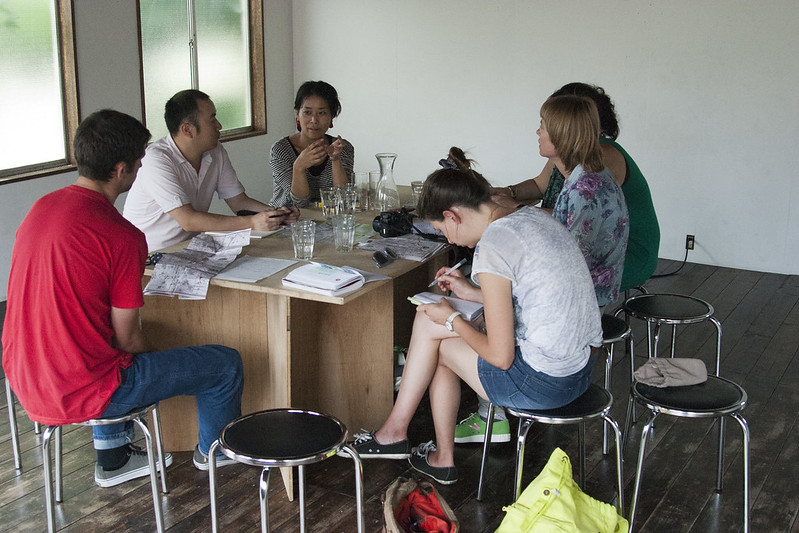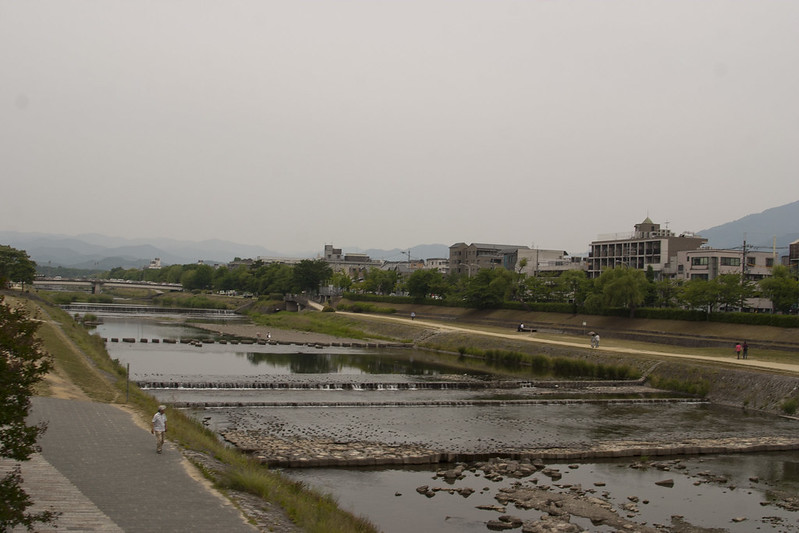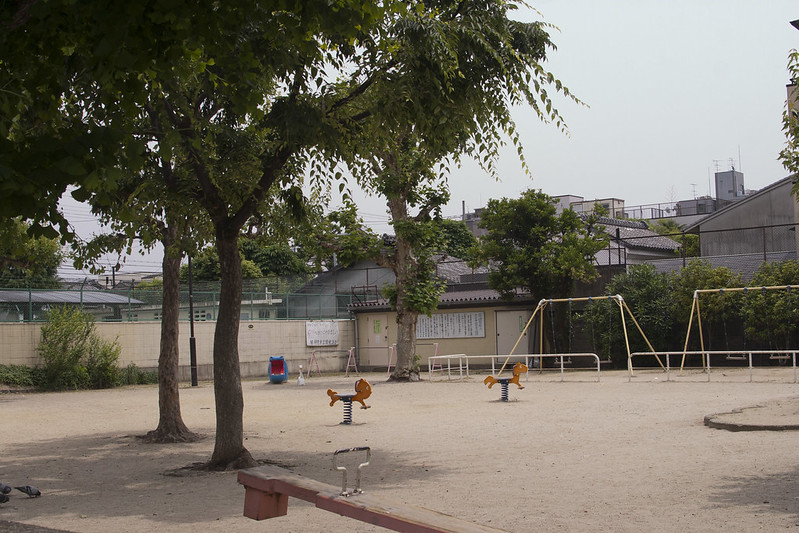little houses crammed in a big city
 Monday, June 25, 2012 at 1:48PM
Monday, June 25, 2012 at 1:48PM Dug out of my Instapaper queue was this very relevant article from Japan Times on the hard choices facing the Tokyo Metropolitan Government regarding traditional neighborhood forms. Neighborhoods built on the Edo street grid and in older shitamachi form, that is, densely clustered wooden homes, make up about 20 percent of Tokyo's building stock, and these neighborhoods in particular are highly susceptible to fire, earthquakes, and other disasters. The narrow, crooked streets make access by emergency vehicles difficult or impossible, and older buildings are exponentially more likely to collapse or burn.
The Japan Times article highlights how Japanese land-use laws are particularly ill-suited to modernizing these neighborhoods for better emergency response - eminent domain is largely out of the question, so the TMG enforces new setback laws when buildings are demolished or significantly altered. Since these changes have the effect of making already small lots even smaller, they perversely decentivize replacement of older buildings or even rehabilitation.
The law effectively acts as a disincentive for rebuilding, since most applicable plots are small to begin with. Homeowners can renovate or remodel their dwellings, but if they rebuild they may have to make the houses even smaller. The situation is even stricter for a house that is not along a road, but is simply boxed in by other houses. Those are designated as saikenchiku-fuka meaning structures that can't be rebuilt at all. Consequently, these properties aren't replaced, and the structures remain fire hazards. In November, a wooden apartment building in the Okubo district burned down, killing four residents. The structure was 50 years old and, due to its inaccessibility, it was designated as a saikenchiku-fuka. Firefighters couldn't reach it.
The set-back/saikenchiku-fuka law may prove to be the main obstacle to Tokyo's redevelopment plan. Property is a complex issue, especially in these densely populated neighborhoods where it isn't always clear who owns what and where one plot ends and another starts.
The article makes reference to Sumida, where we toured with the Mukojima machizukuri and witnessed firsthand the glacial widening of streets there. As New York City planners fond of density and narrow streets, the newly widened roads appeared much more sterile and uninviting than the traditional streets, and our gut instinct was that these traiditional forms should be preserved. However, knowing that Tokyo is about 98% likely to have a direct, major earthquake in the next 30 years, these neighborhoods will be the site of tragedy if nothing is done.
Can tradition and emergency planning coexist in areas like this?
public space in Kyoto - Kamogawa
 Saturday, June 23, 2012 at 1:41PM
Saturday, June 23, 2012 at 1:41PM As noted in the post below, our conversation at the Social Kitchen led us to believe that Kyoto may be experiencing a shortage of true public space as it is understood by New York City planners. According to our Kyoto contacts, Kyoto is fortunate that is has one true public space on a massive scale: the Kamo River.
Diverted away from the city center at its founding, the river goes through the eastern side of central Kyoto, starting at the old imperial grounds. The river is shallow and bordered on both sides by wide walking paths for the entirety of its length through Kyoto. Restaurant decks line the upper banks, and greenery and a steep bank separate the river space from the noise of traffic on street level.
At times natural and strikingly man-made, the river allows for a variety of uses and appears open to all segments of the population. Unlike many of the more intentional parks and public areas, we saw very few signs with rules of use or even recommendations. It was designed with a very light touch.
Megan's description of her year in Kyoto often involves the river - it appears to be a central gathering place for the entire city, year round. Sakiko told us in the Social Kitchen that as far as she was concerned, Kyoto could get by with just this river, and its public space needs would be met.
I only wish we'd stayed in Kyoto longer, though our schedule didn't permit it - it's a complex issue and our whirlwind tour prevented us from exploring these issues more deeply.
fireproof housing, Shirahige-Higashi
 Sunday, June 17, 2012 at 4:25PM
Sunday, June 17, 2012 at 4:25PM  Park facing apartment block, Shirahige-Higashi
Park facing apartment block, Shirahige-Higashi
As part of our tour of Mukojima, we had the opportunity to see the incredible inhabited firewall of the Shirahige-Higashi park and apartment complex. Since Mukojima is considered highly susceptible to fires and seismic activity, this complex was designed in the 1970's to serve as a point of refuge for over 100,000 evacuees from the surrounding area.
The buildings themselves are an 18-block complex of reinforced concrete, steel shutters, and fire cannons. A very unique response to an ongoing issue in Tokyo. I thought it was a strange enough place to warrant an entry in the Atlas Obscura, so I just made one today. Any Pratt students with something to add should feel free to edit my entry!
social kitchen
 Thursday, June 14, 2012 at 6:53AM
Thursday, June 14, 2012 at 6:53AM While travelling in Kyoto, we continued exploring the idea of public space and how that activates a community. A few of us rode our rental bikes through the park up near Doshisha University to visit Social Kitchen, a community space and cafe which seeks to expand space for discussion and community building in Kyoto.
 Talking in the 2nd floor community space at Social Kitchen
Talking in the 2nd floor community space at Social Kitchen
The project is run in part by Natalie's friend Sakiko, who was kind enough to sit and talk with us for a while about public space in Kyoto and Japan in general. We got to get a different perspective on the subject - for Sakiko, Japan has a large amount of public space, but very little of it of a quality suitable for the community.
With the decline of the public bath house and less frequent time spent at temples and shrines, Sakiko felt that residents of Kyoto were left with consumer-oriented public spaces, and the poorly-maintained small parks erected by the government during the early postwar boom, neither of which provide opportunities for community members to come together. She said that Kyoto is lucky, at least, in that the river still provides one of the largest and most accessible true public spaces in the city, a place that has some connection for almost every resident of Kyoto.
Our visit the Social Kitchen was really informative. Natalie is currently staying in Kyoto a little while longer, working with the staff there - she just recently made a post about it to our class blog.






